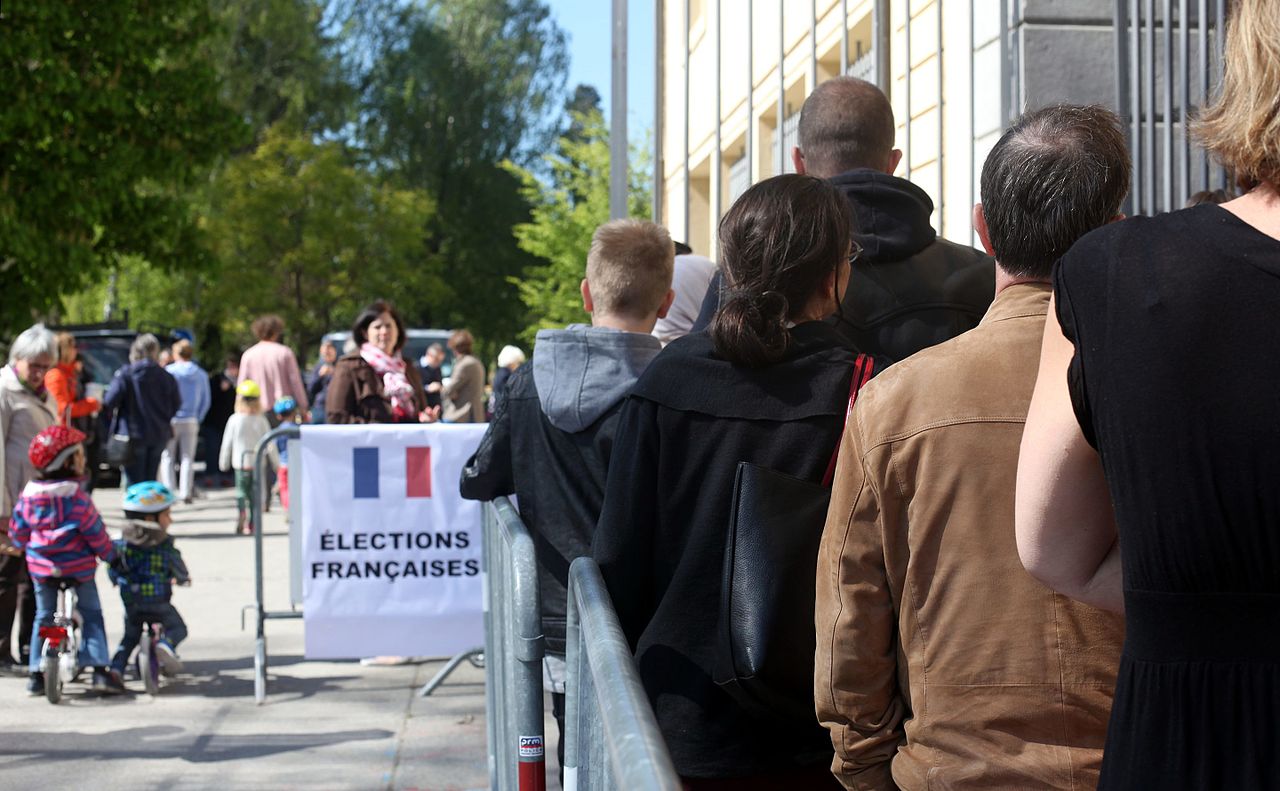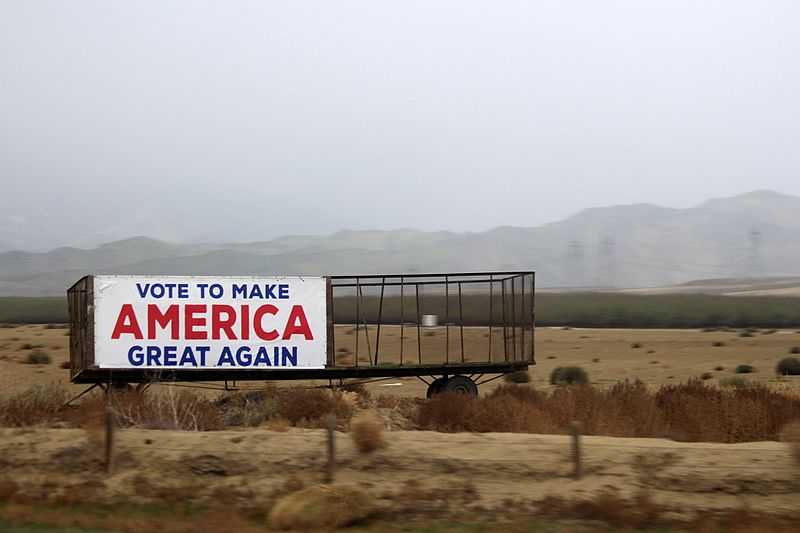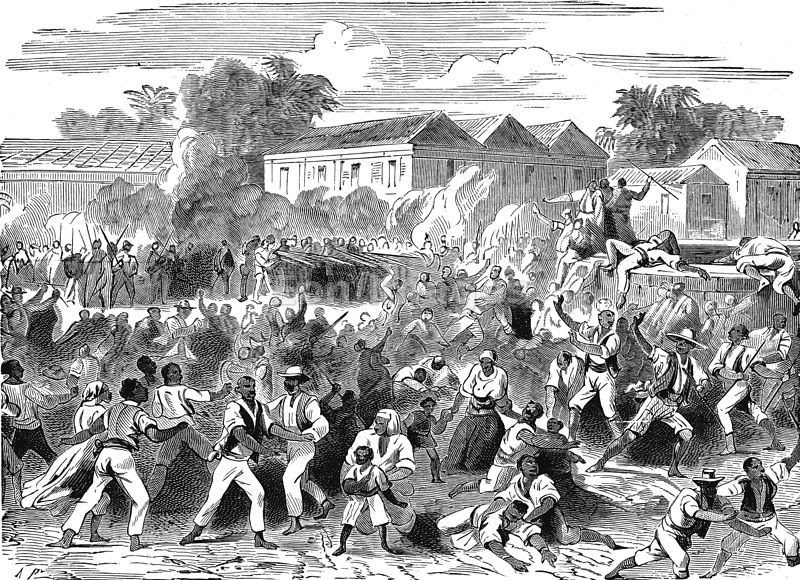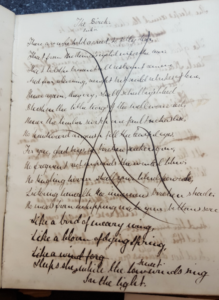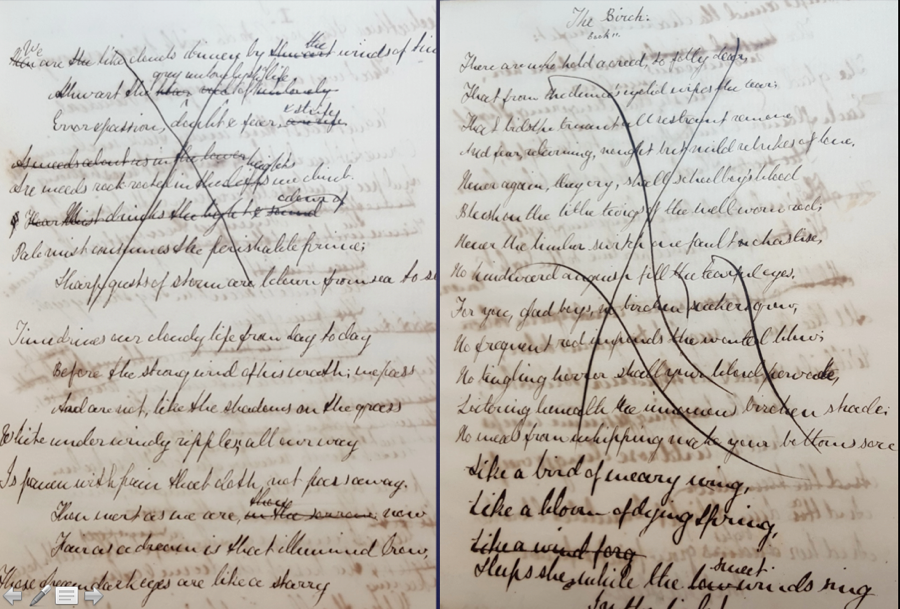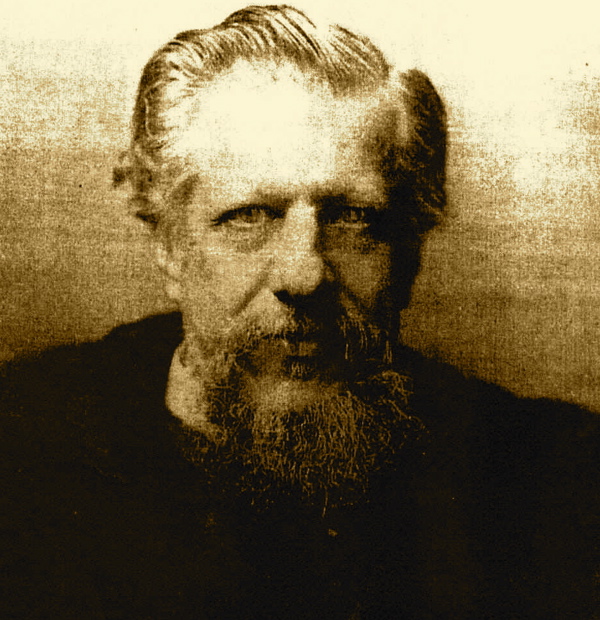by Martin Hägglund
Karl Ove Knausgaard’s My Struggle has been widely celebrated and the English-speaking world is now awaiting the translation of the sixth and final volume, itself more than a thousand pages long. Drawing on the original Norwegian, Martin Hägglund here presents a reading of My Struggle as a whole, pursuing the existential stakes, philosophical implications, and transformative quality of Knausgaard’s project.
This article has been peer-reviewed by the boundary 2 editorial collective and will also be published in boundary 2.
More than sixteen hundred years ago, Saint Augustine explored the experience of time through a simple exercise. You can still try it today. Choose a song that you love and learn it by heart. Keep practicing until you remember every part of the song and every shift in the melody. As you sing it, you will know how much of the song has passed since the beginning and how much of it remains until the end. Yet—in holding the song together—you will find that it is already slipping away. There is never a moment in which the song is present to you. You can sing it only by retaining the notes that have passed away, while anticipating the notes still to come. Even each individual tone is never present: it begins to recede as soon as it sounds and you have to hold onto it to hear anything at all.
This experience of time is, according to Augustine, at work in every moment of our lives. You may think that you are present here today. But in everything you do, you are divided between the past and the future. As you get up in the morning, part of the day is already gone and what remains of the day is still to come. Even if you wake up at dawn and just focus on the first hour of the day, you will never be able to seize it as a present moment. “An hour,” Augustine writes, “is itself made of fleeting moments. Whatever part of the hour has flown away is past. What remains of the hour is future” (Augustine 1963: 11: 15).[1]
You may then try to forget about the hour and direct all your attention to the present moment, concentrating on what you are experiencing right now. Yet, as you grasp the present moment, it is already ceasing to be. As Augustine observes, “if the present were always present and did not go by into the past, it would not be time at all, but eternity” (11: 14). Even the most immediate experience is marked by this temporality. There is never a presence that reposes in itself. Rather, every moment of time is disappearing. This is not to say that the experience of time is an illusion. On the contrary, it is at work in everything you do. Any experience requires that you hold onto a past that is no longer and project yourself into a future that is not yet.
Augustine dramatically describes the experience of time as a distentio that pulls you apart in two different directions. Living on in time you are always distended, torn between a past that you cannot fully recover and a future that you cannot finally predict. By the same token, there is no guarantee that you can sustain what you love. Happiness consists in having and holding (habere et tenere) what you love. But since both you and the beloved are temporal, your having and holding will always tremble with the anticipation of mourning. The moments you stretch out to keep in memory may be taken away and the possibilities you strain toward in hope may never arrive.
The result is a life where opportunity and danger are inseparable. The light of bliss—even when it floods your life—is always attended by the shadow of loss. “Either loss of what we love and have gained,” Augustine explains, “or failure to gain what we love and have hoped for” (Augustine 1982: 62). This is the condition of secular life. Augustine uses the Latin word saecularis to evoke how we are bound by time, through our commitments to a shared world and history, as well as to generations before and beyond us. The historical world in which we find ourselves is the saeculum and this world (hoc saeculo) depends on generation across time.
Instead of pursuing the passions of a secular life, Augustine urges his soul to turn toward God’s eternity as “the place of peace that is imperturbable” (Augustine 1963: 4: 11). This is the movement of his religious conversion. Augustine implores himself not to be “foolish” by trying to hold onto what passes away. Unless the soul turns toward the eternity of God “it is fixed to sorrows” (4: 10), since all things that are temporal will cease to be. With remarkable precision, Augustine locates the risk of mourning not only in erotic love but also in the basic enjoyment of his physical senses. Merely to enjoy the light that illuminates the world is for Augustine a dangerous temptation, since it makes him dependent on something that is transient. “That corporeal light,” he explains, “is a tempting and dangerous sweetness” (10: 34). Enjoying the light of the day leads him to want more light and to suffer when it is absent. Because he loves the light that makes the world visible, “if suddenly the light is withdrawn, I seek for it with longing. And if it is absent for long, I grow sad” (10: 34). Similarly, when Augustine recites and is moved by a song, he warns himself against becoming attached to the sounds and words that vanish in time. “Do no let my soul attach itself to these words with the glue of love [glutine amore] through the sensations of the body. For all these things move along a path toward nonexistence. They tear the soul apart with contagious desires” (4: 10).
Augustine’s aim, then, is to convert the passion of a secular experience that is bound by time into a passion for the eternity of God. He wants to persuade us that it would be better to enjoy the stillness of eternity than to suffer from the drama of living on in time, torn between the past and the future.
Yet Augustine’s own account gives us good reasons to reject his appraisal of eternity. The attraction of eternity is supposed to be that “there you will lose nothing” (4: 11). But if you can lose nothing in eternity, it is because there is literally nothing left to lose. Nothing that happens can matter anymore and it is no accident that the activities offered in Heaven turn out to be remarkably monotonous. “All our activity will consist in singing ‘Amen’ and ‘Alleluia’,” Augustine explains in one of his sermons, and “we shall praise God not just for one day, but just as these days have no end in time, our praise does not cease” (Augustine 1992: 163). Leaving aside the question of whether one could sing or praise something forever, the real question is why one would want to and how any significant aspect of who we are could survive the transformation to timeless rapture. Being absorbed in eternity, there would be nothing left for you or me to do, since nothing could begin or end. As far as I am concerned, I would be dead.
To pursue the latter perspective would be to write a secular—as distinct from a religious—confession. Such a confession would take up Augustine’s explorations of how the identity of the self depends on the fragile operations of memory and how the experience of time cuts through every moment. Like Augustine in his Confessions it would declare: “See, my life is distended” (Ecce distentio est vita mea). But unlike in Augustine, the distention of time would not be regarded as a fallen state from which we need to be redeemed by a religious revelation of eternity. Rather, the distention of time would be seen and felt as the opening of life itself. The task would be to “own” the fact that this is the only life we have—for better and for worse—rather than seeking to leave this life behind. While Augustine denounces the “glue of care” (curae glutino) that binds us to the world, a secular confession would maintain that it is only through finite bonds that we can seize our lives and become who we are.
My aim here is to trace such a secular confession in Karl Ove Knausgaard’s My Struggle. First published in Norwegian and now the subject of wide international acclaim, My Struggle can be read as a contemporary response to Augustine. Ranging over three thousand six hundred pages, the six volumes of My Struggle are framed by Knausgaard’s resolution to tell the truth about his life in detail. Augustine initiated this genre of confessional autobiography with a move that was particularly radical in his religious context. Before Augustine, texts devoted to the lives of holy men (hagiographies) were all written in the third person, with the saint himself withdrawing from the world, leaving someone else to recount his path to transcendence. In contrast, Augustine tells the story of his own life, confessing his doubts, his sexuality, and his sins. Rather than hiding behind the third person, he owns the first person like no one before. We learn about his aging body, his psychological dramas, and even his nocturnal emissions. “In my memory,” Augustine confesses, “there still live images of the past acts that are fixed there by my sexual habit. These images attack me… in sleep they not only are pleasurable but even elicit consent and are very like the act itself” (Augustine 1963: 10: 30).
To expose himself in such detail may seem to be risky for an aspiring theological authority, but for Augustine it is part of a strategy. He exhibits his finite life to inspire a sense of how shameful and inadequate it is by comparison to the eternity of God. This is what Augustine calls “making truth” (veritatem facere). To make truth is not only to tell the truth—to confess what one has done—but also to make truth come into being in oneself by relinquishing the sinful attachment to life in this world and instead turn toward God.
Yet Augustine’s vivid account of the life he is supposed to leave behind also opens the chance for a secular inheritance of his work, where making truth is not a matter of devoting oneself to God but of remaining faithful to a finite life. The great French writer Jean-Jacques Rousseau was the first to take up this possibility (in his own epochal Confessions from 1769) but Knausgaard pushes it further. Unlike Rousseau, Knausgaard does not claim to be exceptional and he does not hold out the promise of a timeless presence. He is the subject of an ordinary life that will irrevocably end and yet he devotes more attention to its minute details than would have been thinkable for either Augustine or Rousseau. The one obligation he recognizes as the writer of My Struggle is to be true to this life.
Thus, Knausgaard places himself under the obligation to account for his life as it is actually lived, only writing about things he has experienced while confessing to how he experienced them—no matter how quotidian, painful, or intimate the details may be. As readers, we get to follow the narrator and protagonist Karl Ove (avowedly identical to the author) in the midst of everyday life. At the time of writing My Struggle, he is in his early forties, absorbed and overwhelmed by being married with three young children. While this domestic life keeps getting in the way of his writing, he makes it a centerpiece of the story itself. We spend many pages going grocery shopping, pushing baby prams in the city, and attending to daily exchanges with his children. All is rendered with a fidelity to everyday life that neither idealizes nor deprecates the experiences in question. We become attuned to the weight of waking up too early while trying to meet the demands of family life, the sinking feeling of facing an apartment in chaotic disorder, and the numbness that follows from an endless array of tasks. Yet the same attunement also yields the radiant moments of everyday life. Precisely because Knausgaard perseveres in exploring his mundane existence, he loosens the hold of habit and makes us see the world anew.
The same holds for when Knausgaard shifts focus from his present life and descends into his past, excavating the world of being twenty-five, or eighteen, or twelve, or seven. His achievement is not simply an act of remembering but of reliving: inhabiting the way the world was given at a time, letting the constraints and the promises, the mistakes and the fortunes, reverberate with the same force they had when first experienced. The impact of falling in love at the age of seven, or despairing over the future at the age of twelve, is here revived with the same depth as the pain of losing a parent or the bliss of having a child in adult life.
As a result, Knausgaard enables the reader to turn back to her own life with a more profound attention and concern. This effect is one described not only by prominent critics but also by the large number of general readers who have been captivated by Knausgaard’s work. When My Struggle was released in Norway (selling more than half a million copies in a country of less than five million people), readers testified to how Knausgaard—in opening up his life through writing—had opened their own lives to them. The same testimony can be found among many of his readers in the US and elsewhere. The transformative effect of Knausgaard’s writing does not necessarily depend on sharing his cultural background or personal circumstances. You are a potential addressee of his work by virtue of being a time-bound, practically committed agent, who can be moved to explore and deepen the commitment to the life you are leading. Knausgaard’s writing can give you new access to your own life not necessarily because you identify with his experiences but because My Struggle exemplifies a devotion to life as it is lived—a devotion that you can take up and practice in relation to your own existence.
The key here is the sustained act of attention that characterizes Knausgaard’s writing. When he dedicates twenty pages to exchanges over breakfast with his daughters on a rainy Wednesday morning—or seeks to pry open every sensation and emotion that resonated in his twelve-year old self on the way home from swim practice one particular winter night—he is not simply imposing his life on us. He is teaching us (and himself) how we can remember what we tend to forget. By describing the quotidian in painstaking detail, he opens our eyes to how much is going on even during days when nothing seems to happen. And by resuscitating his former selves, he sensitizes us to all the vanished moments that remain inscribed in us—triggering memories that can open painful wounds but also bring you back to life.
The appeal of Knausgaard’s writing, then, is not that it forces you to see his life with your eyes. Rather, his writing enables you to see your life with his eyes—with the level of attention he bestows on a life. Thereby, you can come to recognize the myriad ways in which you are indeed alive, even when you seem dead to yourself or lost in the mundane events of everyday existence. As you take care of the tasks at hand, what you see bears the weight of your love and your evasions, the history of who you have been and may turn out to be. Evenings that no one else can remember live in you, when the snow touched your face or the rain caught you unprepared, when you were all alone and yet marked by all the others that have made you who you are. There are things you cannot leave behind or wish you could retrieve. And there is hope you cannot extinguish—whether buried or insistent, broken or confident, the one never excluding the other.
Such a distended life is what Knausgaard’s prose invites you to recognize as your own. Stretching toward the past and straining toward the future, an entire world emerges through you. You did not make this world, you were made by it, and now you sustain it. This is your life. There is nothing else. But what there is—and what you do—binds you to the world in ways that are deeper than you can ever disentangle.
The struggle, then, is how to make this life your own. That is the starting point for Knausgaard’s project. When My Struggle begins, he finds himself detached from the life he is living. He endures what he has to do, but he has withdrawn from being truly involved in what happens. At a remove from his existence, he feels as though he has nothing to lose and by the same token his life appears to be meaningless. “The life around me was not meaningful. I always longed to be away from it,” he writes. “So the life I led was not my own. I tried to make it mine, this was my struggle” (Knausgaard 2014: 67).
The struggle to make life his own is not a quest to become independent or self-sufficient. His life is not his own in the sense that he would be able spontaneously to decide who he is or what he is going to do. On the contrary, there is a keen awareness in Knausgaard of how we belong to a world we did not create and depend on others who exceed our control. To own your life is not to free yourself from this dependence. Rather, your existence is inseparable from the ways you are engaged in and committed to being in the world. For example, you may find yourself (as Knausgaard does at the beginning of My Struggle) married with children and overcome by a sense that you cannot make it work. You are trying to succeed—trying really to be there for your loved ones—but keep failing and feel yourself disintegrating in the process.
To disown your life in this situation is to settle for mere perseverance, going through the motions while numbing yourself and dreaming of being somewhere else. Knausgaard is attuned to this temptation and he himself repeatedly disowns his life. Yet the struggle he engages in through his writing is to own his life. He actively seeks to identify himself with what he is doing and acknowledge what he loves. This is an ongoing struggle. To own what you do and what you love is to put yourself at stake, to make your life depend on the fate of your commitments. To own your life is not to own what you love (it is not your possession) but to own that you love what you love. This is the condition for anything to matter to you—for anything to have meaning—but it also puts your life at risk. If you own what you do, you are bound to be deeply affected by how it is received. Precisely because you are engaged in a meaningful activity—precisely because you are doing something that matters to you—you are susceptible to the experience of failure. Likewise, if you own that you love what you love, you make yourself vulnerable to what happens. Your dreams may come true or your hopes may be shattered. You now have something that matters to you, but by the same token you have something to lose.
To own your life, then, is not to have it as your sovereign property. On the contrary, to own your life is to expose yourself. Only someone who owns his life—only someone who makes his life depend on what he does and what he loves—can have the experience of it being taken away from him.
Whence the temptation to disown your life: to bury your hopes before they fail to come true, to withdraw your love before it makes you suffer. These are paths of detachment, where you can come to seek protection from the pain of failure or loss by divesting yourself in advance. There are certainly situations where such strategies make sense and some degree of detachment is necessary to endure in our lives—otherwise anything could break us. But as a principle detachment is a dead end: it can lead to nothing but the destitution of meaning or a nihilistic rejection of the world.
The animating principle of Knausgaard’s writing is rather one of attachment, which is all the more profound because it remains faithful to the ambivalence of any attachment. The credo of his work, I will argue, is a phrase that recurs throughout the six volumes of My Struggle and is difficult to translate. “Det gjelder å feste blikket,” Knausgaard writes in Norwegian. The phrase could be rendered as “one must focus the gaze” or “what matters is to focus the gaze.” But the Norwegian verb that we would then translate as to focus (“å feste”) literally means to attach and the phrase is clearly a personal injunction rather than a simple statement. So a better translation would be: attach yourself to what you see, focus your gaze by attaching yourself to what you see. This is the imperative of My Struggle.
The imperative can be understood in three different senses. These senses are intertwined, but it is useful to distinguish them to see different aspects of Knausgaard’s writing. The first sense of the imperative is to focus your gaze on the life you are actually living. This explains why Knausgaard can devote more pages to apparently trivial activities than to transformative life events. If he is going to focus his gaze on the life he is actually living, he cannot just capture the moments of trauma or bliss that glow in the dark (birth, death, love, mourning); he must also capture the stretches of time out of which they emerge and the things he does on days he would not remember: setting the table, cleaning up the house, flipping through books, taking a walk on a gray afternoon, staring out the window. Knausgaard has an extraordinary ability to open up and dilate such moments, making even dull experiences come alive with the sensory, perceptual, and reflective richness of being in the world.
Yet it is not enough to focus your gaze on what you do, you must also acknowledge the ways in which you are attached to what you see. This is the second sense of the imperative. Accordingly, Knausgaard seeks to render the waves of boredom and elation, ambition and frustration, intense joy and absentminded occupation, which form the rhythms of his days. Above all, he tries to focus his gaze on what means the most to him. Here too it is a matter of acknowledging how he is attached to what he sees, even at the cost of confessing painful ambivalence. We learn of the absorbing love affair that brought him and his wife together but also of the fears, the petty grievances, the daily resentments, and the storming conflicts that almost tear them apart. In focusing his gaze on his children, there can be an exceptional tenderness in attending to their unique personalities and the daily dramas of their vulnerable, growing selves. But there are also detailed, excruciating accounts of how he loses sight of who they are and what they need—of parental love clouded by anger, exhaustion, or resignation.
Knausgaard’s writing could here be described as a form of mindfulness, but one must then separate mindfulness from Buddhist meditation, with which it is often associated. According to Buddhism, you should focus your inner gaze and attend to your attachments with the aim of detaching yourself from the struggles they entail. By paying attention to the thoughts and feelings that arise in your consciousness, you are supposed to learn to disengage from them—to not identify with what you think and feel. The goal is to attain a state of pure consciousness, where there is perfect serenity because you have ceased to care. Thus, while certain meditation techniques can be adapted for the secular purpose of reengaging with the world—helping you recover from negative experiences or simply increasing your concentration and energy—the religious aim of Buddhism is quite different. On a secular understanding, meditative detachment is a relative and temporary means employed for the sake of being able to better engage the struggles that follow from being attached to life. In Buddhism, on the contrary, absolute detachment is an end in itself. Since all attachments entail suffering, only absolute detachment can bring about the elimination of suffering that Buddhism holds out as your salvation. What ultimately matters is not who you are or what you do, what ultimately matters is that you attain a state of consciousness where everything ceases to matter—so that you can rest in peace.
The aim of Knausgaard’s mindfulness is the opposite. By attending to the struggles that emerge from his attachments, he seeks to identify more deeply with them: to become more attached to the life he is living. This is the third sense of his imperative. You must attach yourself to what you see—even at the cost of suffering—because without attachment there is no meaning: nothing to care for and no one who binds you to the world. To counter such nihilism is the animating ambition of Knausgaard’s secular confession. “Indifference is one of the seven deadly sins, actually the greatest of them all, because it is the only one that sins against life,” he writes at the end of the second volume. And in the final, sixth volume he presses home the stakes of being able to focus your gaze, attaching yourself to what you see:
I know what it means to see something without attaching yourself to it. Everything is there, houses, trees, cars, people, sky, earth, but something is missing nonetheless, because it does not mean anything that they are there. They could just as well be something else, or nothing at all. It is the meaningless world which appears like that. It is possible to live in the meaningless world too, it is just a matter of enduring, and that one will do if one must. The world can be beautiful… but it does not make any difference to you, it does not affect you. You have not attached yourself to what you see, you do not belong to the world and can, if push comes to shove, just as well leave it. (Knausgaard 2012: 365)
This is the position of someone who has disowned his life. What renders the world meaningless—or meaningful—is not an objective feature of what there is but proceeds from the degree of your attachment to what you see. This does not imply that you are free to decide the meaning of the world. But it does entail that any meaningful engagement depends on your attachment to others and to being in the world. Your capacity to attach is not simply up to you—it can be enabled or disabled by what happens to you—but whether and how you attach makes all the difference in the world.
The difficulty of owning such a life is an integral part of Knausgaard’s writing. He struggles with the temptation to disown his life and dwells on the many ways in which we may come to give up on our existence. The quotidian way is the slow death of a gradually increasing indifference, but prominent in his work is also the reckless renunciation of obligation at the depths of alcoholism, the short-circuiting of emotion at the heart of depression, or the ultimate self-destruction of suicide. Knausgaard explores these forms of disowning one’s life without recurring either to moralizing judgment or to condemnation. Yet, in and through these explorations, he recalls us to the fact that it is only by owning our lives—as essentially being in the world—that we have a chance at a meaningful existence. This is the secular conversion at work in Knausgaard’s confessions. By focusing his gaze on his life and attaching himself to what he sees, he turns us around: not toward eternity but toward our finite lives as the site where everything is at stake. Like all conversions, this is not one that can be achieved once and for all: it is a continuous struggle to own our lives. But unlike in a religious conversion, the goal is not for the struggle to come to an end. Rather, to own our lives is to acknowledge that struggle belongs to the very life we want to lead. If we want our lives to matter, we want to have something that we can lose.
Nevertheless, Knausgaard himself is liable to devalue his life from a religious perspective. At one point in the final volume, he is reading the Church Fathers (of whom Augustine is the most prominent) and comes to feel that his own experiences are impoverished in contrast to their mystical ecstasies. Knausgaard now maintains that his own search for meaning is pathetic compared to “the devotion of the mystics” (Knausgaard 2012: 610) and condemns himself as “one of the world’s many soulless and banal human beings” (611). This is in line with the sense of shame Augustine hoped to inspire. From a religious point of view, a finite life without redemption is indeed soulless and banal. This view is inherited even by many who do not have religious faith—regarding their lives as futile because they lack a sense of the eternal—and Knausgaard is tempted by it in a number of the essayistic reflections that pervade My Struggle. He repeatedly argues that art aspires to retrieve a sense of the holy, while lamenting that we can no longer attain it. “The longing and melancholia that Romantic art expresses is a longing for this,” he writes with reference to a religious sense of the holy, “and a mourning of its loss. At least that is how I interpret my own attraction to the Romantic in art” (610). On this conception, art would strive to open a world that is “holy” in the sense of being untouched by time and finitude, a world where everything is present in itself, but which we cannot enter because we are “fallen”: incapable of living in “the indifference of the divine” and “the all extinguishing light of the good” (409).
Since these religious ideas are so familiar—and supposedly profound—they are likely to be taken as a guide to Knausgaard’s work. Yet that would be a mistake. Throughout My Struggle (and particularly in the final volume) there are numerous statements or small essays that appear to present the philosophy of the book. Many of them are in conflict with one another or internally contradictory and to take them at face value would be to miss almost everything that is important in them. Knausgaard is a tremendous essayist, but his particular talent is to allow his essays to emerge as part of the narrative. The theoretical reflections exist on the same plane as the practical actions; they reflect how someone thinks and feels at a particular time rather than expressing the perspective of someone who is outside the narrative and in control of its meaning.
To understand the philosophical poetics of My Struggle, then, we must attend to what happens in the narrative alongside the many and often contradictory statements of intent. The view that our secular lives are soulless and banal—that we need to be saved from our time bound existence—belongs to the tendency to disown his life. While this tendency persists throughout My Struggle, the very writing of the book goes in the opposite direction. Far from regarding his life as soulless or banal, the writer of My Struggle depends on the faith that there is enormous significance and depth in the experiences of a finite life, one worthy of being explored down to the most subtle nuances and emotional reverberations. The aim is to attach himself more deeply to his life, rather than transcend it. From this perspective, it is Augustine’s mystical ecstasies that are soulless and banal, since they seek to leave the world behind in favor of an eternal presence where nothing happens. What is profound in Augustine is not the ascent to heaven but the descent into time and memory. It is the latter, descending movement that Knausgaard follows in his practice as a writer.
The key issue here is time. By using the first person like no one before, Augustine dramatizes what it means to be torn apart by time. Even his abstract philosophical speculations in the Confessions are marked by his concrete existence as he is longing and languishing, seized by hope or fear, elated by an insight or frustrated by an impasse. Accordingly, when Augustine pursues his philosophical analysis of time-consciousness in the Confessions, he also makes his reader feel how the problem of time is an intimate, personal concern. The investigation of time must itself be carried out in time and Augustine foregrounds the effort to articulate his own arguments, as an ongoing line of thought that at any moment may be broken. Likewise, when Augustine analyzes the work of memory, he does so by descending into “the caves and caverns” of his own memory (Augustine 1963: 10: 17), exposing the ways in which the integrity of his self is breached by a past he cannot fully recover. Moreover, as Augustine is writing his Confessions, he is still vulnerable to change and this drama becomes a part of the book itself. Intensifying the sense of his own vanishing presence, Augustine even highlights the fleeting time in which he composes his text: “Consider what I am now, at this moment [in ipso tempore], as I set down my confessions” (10: 3).
The same turn toward his own passing presence is pursued by Knausgaard in My Struggle. “Today is February 27, 2008. The time is 11:43 p.m.,” we read early on in the first volume, as he records the night when he begins to work on the book (Knausgaard 2013: 25). A couple of pages later we learn that six days have passed for Knausgaard at the time of writing, as we find him at his desk again: “It is now a few minutes past eight o’clock in the morning. It is March 4, 2008. I am sitting in my office, surrounded by books from floor to ceiling, listening to the Swedish band Dungen while thinking about what I have written and where it is leading” (28). These explicit marks of time recur throughout My Struggle, returning with a particular frequency in the final volume, when he is trying to complete the book. “I am sitting all alone as I am writing this. It is June 12, 2011, the time is 06:17 a.m., in the room above me the children are asleep, at the other end of the house Linda is asleep, outside the window, a few yards out in the garden, angular sunrays descend on the apple tree. The foliage is filled with light and shadow” (Knausgaard 2012: 227).
These apparently simple observations encapsulate the poetics of My Struggle. Knausgaard’s writing develops a careful attention to the time and place where he finds himself. The fundamental form of such attention is the turn toward what is happening at this very moment—trying to capture life as it unfolds right now. The aim is to slow down the experience of temporality, to dilate moments of time and linger in their qualities. This movement does not yield a stable presence but, on the contrary, a stronger sense of how the present moment is ceasing to be and has to be held in memory, as it opens onto a future that exceeds it. By instilling this sense of transience, Knausgaard seeks to awaken his own attention and the attention of his readers. He wants to counteract habit: to prevent himself from taking his life for granted and see the world anew. This attempt to break with habit—to deepen the sensation of being alive, to make moments of time more vivid—is necessarily intertwined with a sense of finitude. It is because his life is finite that he cannot take it for granted and his desire to linger in a moment is animated by the awareness that it is passing away. Indeed, the sense of transience is an essential part of the radiance of the moment itself. Seeing the world anew is inseparable from the sense that the world you see anew is finite. It has not always been, it will not always be, and therefore it must be seized before it vanishes.
Knausgaard’s great predecessor here is the modern writer who explored the experience of time more deeply than any other: Marcel Proust. Knausgaard recalls that he not only read Proust’s In Search of Lost Time “but virtually imbibed it” (Knausgaard 2013: 29) and My Struggle bears the imprint of many passages from Proust. The influence is visible already in the basic form of the project. In Search of Lost Time devotes seven volumes, stretching over more than three thousand pages, to a man recollecting his life. My Struggle apparently follows the same model, devoting six volumes, also stretching over more than three thousand pages, to a man recollecting his life. While Knausgaard transforms the Proustian project in an important way—to which I will return—it is illuminating to dwell on what he learns from Proust. The protagonist Marcel is himself in the process of learning throughout In Search of Lost Time. From early childhood, he wants to become a writer, but he is plagued by doubts about his talent and not until the end does he discover what the subject of his book should be, namely, his own life. Rather than a transcendent topic of writing, which has always left Marcel’s imagination blank, it is “this life, the memories of its times of sadness, its times of joy” (Proust 2003: 208) that he comes to see as the basis for his book. “The greatness of true art,” he argues, “lies in rediscovering, grasping hold of, and making us recognize…this reality which we run a real risk of dying without having known, and which is quite simply our life” (204).
Accordingly, Marcel emphasizes that his work will be devoted to “the thing that ought to be most precious to us,” namely, “our true life, our reality as we have felt it” (459). This is why he can dwell on the experience of falling asleep for more than thirty pages, or seek to distill every nuance of an erotic touch, a flickering memory, an awakening sensation. Through the power of his prose, he wants to sharpen our perception and refine our senses. The aim is not to transport us to another life, but to make us genuinely experience the life we are already living. And as Marcel understands, to achieve this aim we must transform our relation to time. If habit tends to deaden and dull our experience, it is because it reduces the impact of time on our senses. Even though every day is different and there is no guarantee that there will be another one, habit makes us feel as though our life has been all the same and will continue indefinitely. Thus, when we get used to seeing something we love, we tend no longer to notice its details or marvel at its existence. Likewise, when we get used to living with someone we love, we run the risk of taking him or her for granted and no longer appreciating his or her unique qualities.
The key to breaking habit, then, is to recall that we can lose what we love. Far from devaluing life, the dimension of loss is part of what makes it emerge as valuable. We may know that we are going to die, but the role of art is to make us feel what that means and thereby intensify our attachment to life. Accordingly, when Marcel comes to narrate his own life, he is all the more attentive to the impact and nuance of his past experiences. Even many events that were unremarkable or unhappy return with a luminous quality in his memory, since they appear as irreplaceable in the light of loss. The value of a past experience may thus be enhanced when it is infused with the pathos of being lost, just as the value of a current experience may be enhanced by the sense that it will be lost.
Yet Marcel pursues his insight only in relation to a distant past and not in relation to his ongoing life as he is writing. In Search of Lost Time ends with the revelation that leads Marcel to become an author and to write the book we have been reading. Nevertheless, we never learn under what circumstances Marcel is writing the seven volumes, how much time it takes, and what he is struggling with as he is trying to complete the book. To be clear, In Search of Lost Time is not Proust’s autobiography. It does not tell the story of Proust’s life but is the autobiography of the fictional character Marcel, who within the frame of the novel writes the story of his life. We know that Proust worked on In Search of Lost Time for more than thirteen years and was unable to finish the book before his death, struggling to enter revisions in the galley proofs up until the end. Within the frame of the novel, however, we do not get to witness an analogous struggle on the part of Marcel as the supposed author of the pages we are reading. Indeed, we have no sense of what his daily life is like as he is writing, or what happens to him during the years it takes to compose his autobiography. All his efforts are devoted to giving meaning and significance to his past, not to his ongoing life.
This is the structure that Knausgaard transforms. Within the frame of My Struggle, the current life of the narrator Karl Ove is itself part of the story and we are even told exactly how long it takes for him to write the six volumes. He begins to work on the first volume at 11:43 p.m. on February 27, 2008, and he completes the last volume at 07:07 a.m. on September 2, 2011. To be sure, the beginning and end of the narration cannot be dated with such complete precision, but what is important is the ambition to situate his writing as part of an ongoing life. We learn in detail about how his work on the book is interrupted by child care, practical worries, relationship troubles, and personal anxiety. All of these things belong to the subject matter of the book itself. The struggle is not only to recover the past, but also to grasp hold of and engage with the life that continues.
Knausgaard thereby reveals a difficulty that Proust tends to conceal. If you only focus on the distant past (as Marcel does) it is relatively easy to gain a new appreciation of your life, since you can transform the past into an object of contemplation that no longer makes any direct demands on your engagement. You can dwell on details you previously overlooked, absorb the impact of events you did not understand at the time, and even feel a surge of nostalgia for things you did not enjoy when you first experienced them. Indeed, the sense that all these things are irrevocably gone can make them appear more precious than they actually were. Your nostalgia, then, can come to shelter you from the demands of a life that still has to be lived. It is telling that In Search of Lost Time ends with Marcel withdrawing from the world to write his book. His life is effectively over and the only thing that remains for him is to tell his story. Of course, Marcel still has to live, but we are supposed to forget about this in favor of an immersion in the past. Thus, the few times we catch a glimpse of him in the act of narration, it is the image of someone who has reduced his engagements to a minimum and apparently places no value on his current life. “I, the strange human who, while he waits for death to release him, lives behind closed shutters, knows nothing of the world, sits motionless as an owl, and like that bird can only see things at all clearly in the darkness” (Proust 2002: 371).
In contrast, the structure of My Struggle looks like a deliberate inversion of the one that shapes In Search of Lost Time. While Marcel’s book ends with him becoming an author through the decision to write the story of his life, Karl Ove’s book begins with him already being an author who decides to write the story of his life and ends with the declaration that he is no longer an author after the completion of his book. “I will enjoy, really enjoy, the thought that I am no longer an author,” are the last words of My Struggle (Knausgaard 2012: 1116), followed by a separate page with two sole sentences that address his wife and children: “For Linda, Vanja, Heidi, and John. I love you” (1117). Where Marcel ends by retreating from life into literature, Karl Ove ends by retreating from literature and turning toward life. This is not a strict opposition, since Marcel retreats into literature to understand and appreciate life, while literature is an essential part of Karl Ove’s ability to understand and appreciate life. Nevertheless, the way he transforms the ending of In Search of Lost Time indicates the challenge Karl Ove poses to himself. The retreat into writing is supposed to lead back into his actual life and not out of it. Indeed, he explicitly wants to change and become a better person in his daily existence. In addition to recovering the past, his task in My Struggle is to keep faith with what he is seeing and living now—not years later when he is looking back on it.
By the same token, he has to confront the difficulty of appreciating his life and sustaining his deepest attachments. Loving his wife and children is not something that can be accomplished once and for all; it is an act of devotion that has to be sustained every day and one that can always fail, with joy giving way to tedium, loving care compromised by indifference or frustration, and the sense of wonder lost in deadening habit. The aim of My Struggle is not to purify one from the other, but to confront the daily, interminable battle between the two. This is why we find the narrator in the midst of life, rather than at a remove from life as in the case of Marcel. Karl Ove is never at rest and even when he retreats to the writing desk he is caught up in the practical engagements of everyday life. The engagements may be painful or passionate, tedious or elevating, but the point is to make them all glow in their particularity.
Thus, at different intervals in telling the story of his life, Karl Ove transitions from recounting the past to depicting himself at the time of writing. Within the space of a sentence, we can move from a young Karl Ove in action to his older self recollecting the events several decades later. The first time this happens is early in the first volume, when we learn about his current life situation on the evening in February when he begins to work on the book. After an immersive description of one night when he was eight years old, Knausgaard looks up from his desk and speaks to us in ipso tempore—at the very moment of writing:
As I sit here writing this, I recognize that more than thirty years have passed. In the window before me I can vaguely make out the reflection of my face. Apart from one eye, which is glistening, and the area immediately beneath, which dimly reflects a little light, the whole of the left side is in shadow. Two deep furrows divide my forehead, one deep furrow intersects each cheek, all of them as if filled with darkness, and with the eyes staring and serious, and the corners of the mouth drooping, it is impossible not to consider this face gloomy.
What has engraved itself in my face?
Today is February 27, 2008. The time is 11:43 p.m. I who am writing, Karl Ove Knausgaard, was born in December 1968, and I am accordingly, at this moment, 39 years old. I have three children, Vanja, Heidi, and John, and I am married for the second time, to Linda Boström Knausgaard. All four are asleep in the rooms around me, in an apartment in Malmö, where we have now lived for a year and a half. Apart from some parents of the children at Vanja and Heidi’s nursery we do not know anyone here. This is not a loss, at any rate not for me, I don’t get anything out of socializing anyway. I never say what I really think, what I really mean, but always more or less agree with whomever I am talking to at the time, pretend that what they say is of interest to me, except when I am drinking, in which case more often than not I go too far the other way, and wake up to the fear of having overstepped the mark. This has become more pronounced over the years and can now last for weeks. When I drink I also have blackouts and completely lose control of my actions, which are generally desperate and stupid, but also on occasion desperate and dangerous. That is why I no longer drink. I do not want anyone to get close to me, I do not want anyone to see me, and this is the way things have developed: no one gets close and no one sees me. This is what must have engraved itself in my face, this is what must have made it so stiff and masklike and almost impossible to associate with myself whenever I happen to catch a glimpse of it in a shop window. (Knausgaard 2013: 25-26)
This is not only the night when he begins to write the book; it also marks the degree zero of his project. The man who looks at himself here is someone who can barely recognize himself. He has withdrawn from the world, but by the same token he has disowned his life and lost hold of himself. The writing of My Struggle is an attempt to reverse this process, to turn him back toward his own life. He who never says what he really thinks and really means will now do so for thousands of pages. And he who does not want anyone to see him, who does not want anyone to get close to him, will now expose himself and make his life visible for anyone to see. This is not to say that he has a hidden kernel of identity that is independent of others and ready to be revealed at will. On the contrary, the difficulty of owning his life is that he is inseparable from the way he is acting in the world. Even withdrawing from others is a form of being with them and seeking to leave the world behind is itself a way of being in it. To own his life is to acknowledge this dependence, to recognize—for better and for worse—that he is attached to what he sees.
The project of owning his life, then, begins with a literal self-reflection. He sees his face in the dark window and has to grapple with what has happened to him. In a way, all of My Struggle can be seen as an attempt to answer the question he asks here: “What has engraved itself in my face?” He descends into the past to recover his life, but also to be able to engage the present and the future.
Consequently, he has to confront what Proust calls “embodied time” (temps incorporé). Embodied time designates how we carry the past with us, even when we are not aware of it or in control of how it affects us. This embodied time is for Proust the very condition of writing an autobiography. Because the past is inscribed in our bodies, we have the chance of reconnecting to our former selves, recalling not only what we did but also how it felt and thereby retrieving a genuine sense of our lives. For the same reason, however, our connection to the past is tenuous. We may never gain access to many of the experiences that are stored in us and—even when we do—the meaning of the past is never given in itself but refracted through our current sense of self and our projections of the future. Moreover, if our memories are embodied it means that they can be damaged or effaced by what happens to the body. The duration of the past is not secured by an immaterial soul, but depends on the retention of time in a frail and material body.
Thus, when Marcel discovers the importance of embodied time, he is haunted by an awareness of all the factors that may eradicate the memories that are retained in his body. “I felt the present object of my thought very clearly within myself… but also that, along with my body, it might be annihilated at any moment” (Proust 2003: 345-46). The discovery of embodied time inspires him to write In Search of Lost Time, but it also marks the precariousness of his project. At the end of the last volume, on the verge of beginning to write, Marcel worries about how brain damage or various accidents may prevent him from composing his autobiography. And indeed, before starting to work on his book, Marcel falls in a staircase and suffers from a memory loss that heightens his anxiety over not being able to write. “I asked myself not only ‘Is there still enough time?’ but also ‘Am I still in a sufficiently fit condition?’” (345). In pursuing the implications of embodied time, Marcel is thus finally led to the dead body, which underlines the finitude of the lived time to which he is devoted. “After death,” he writes on one of the last pages, “Time leaves the body, and the memories—so indifferent, so pale now—are effaced from her who no longer exists and soon will be from him whom at present they still torture, but in whom they will eventually die, when the desire of a living body is no longer there to support them” (357).
While the problem of the dead body only appears at the end of Proust’s novel, it is foregrounded from the beginning of My Struggle. Like Proust, Knausgaard wants to evoke the depths of time in our lives; how we go far beyond our physical location in space by bearing the past with us and projecting ourselves into a future. It is this distention of time that allows us to have a history and a lived experience. Yet, in Knausgaard there is a strong parallel awareness of how the dimension of lived time—with its hopes and fears, hidden riches and emotional upheavals—depends on a material body that will remain after the distended life has expired.
Thus, with a remarkable incision, the first sentences in the first volume of My Struggle force us to witness the very transition from a living to a dead body:
For the heart, life is simple: it beats for as long as it can. Then it stops. Sooner or later, one day, this pounding action ceases of its own accord and the blood begins to run toward the lowest point of the body, where it gathers in a small pool, visible from the outside as a dark, soft patch on ever whitening skin, as the temperature sinks, the limbs stiffen and the intestines drain… The enormous hordes of bacteria that begin to spread through the body’s innards cannot be halted. Had they tried only a few hours earlier they would have met with immediate resistance, but now everything around them is still, as they delve deeper and deeper into the moist darkness. They advance on the Havers Channels, the Crypts of Lieberkühn, the Isles of Langerhans. They proceed to Bowman’s Capsule in the Renes, Clark’s Column in the Spinalis, the black substance in the Mesencephalon. And they arrive at the heart. As yet, it is intact, but deprived of the activity for which its whole construction has been designed, there is something strangely desolate about it, like a production plant that workers have been forced to flee in haste, one may imagine, the stationary vehicles shining yellow against the darkness of the forest, the huts deserted, a line of fully loaded cable-buckets stretching up the hillside.
The moment life departs the body, the body belongs to the dead. Lamps, suitcases, carpets, door handles, windows. Fields, marshes, streams, mountains, clouds, the sky. None of these is alien to us. We are constantly surrounded by objects and phenomena from the realm of the nonliving. Nonetheless, there are few things that arouse in us greater distaste than to see a human being caught up in it, at least if we are to judge by the efforts we make to keep corpses out of sight. In larger hospitals they are not only hidden away in discrete, inaccessible rooms, even the pathways there are concealed, with their own elevators and basement corridors, and should you stumble upon one of them, the dead bodies being wheeled by are always covered. When they have to be transported from the hospital it is through a dedicated exit, into vehicles with tinted glass; in the church grounds there is a separate, windowless room for them; during the funeral ceremony they lie in closed coffins until they are lowered in the ground or cremated in the oven. (Knausgaard 2013: 3-4)
For a novel that is so devoted to the first-person perspective, it is striking to begin with a view of life that only can be given from a third-person perspective. No one can experience the moment of death that Knausgaard describes. We can infer it when we observe another body at the moment of death, but when it happens to ourselves we are already gone. And yet we belong to this body that is not under our command. We are altogether dependent on our body—cannot exist without it—but our body is not dependent on us. After we are gone, it can remain as an object in the world, indifferent to our absence. Presumably, this is why the dead body is so uncanny and tends to be hidden away. The dead body reminds us that we are not only in the world but also of the world, made of materials that will degrade and decompose.
The materialist reminder runs throughout My Struggle. Specifically, Knausgaard employs a bifocal vision, where every existential phenomenon is seen both in its own right and as dependent on a physiological machinery. The paradigmatic example is the heart, which is the major and apparently conventional metaphor in My Struggle. The heart in Knausgaard is explicitly a metaphor for the living principle of his existence, expressed most forcefully in the intuitive experience of love. “The heart is never mistaken,” is the phrase he employs repeatedly, to explain his life changing decisions. The heart, then, designates his deepest and most intimate sense of self. At the same time, the heart is treated not metaphorically but literally. As in the opening paragraph quoted above, Knausgaard repeatedly lays bare the heart as a physical mechanism that is utterly indifferent to his sense of self. The heart beats and then it stops beating, whether he wills it or not. The dissection of his heart becomes not only an intimate confession but also an exploration of his own biological-material constitution, as though he were opening his heart in both a romantic and a chirurgical sense.
Knausgaard thus pushes the notion of embodied time to a stark conclusion. Looking at pictures of himself as an infant, he asks:
Is this creature [his infant self] the same person as the one sitting here in Malmö writing? And will the forty-year-old creature who is sitting in Malmö writing this one overcast September day—in a room filled with the drone of the traffic outside and the autumn wind howling through the old-fashioned ventilation system—be the same as the gray, hunched geriatric who forty years from now might be sitting dribbling and trembling in an old people’s home somewhere in the Swedish woods? Not to mention the corpse that at some point will be laid out on a bench in the morgue. Still known as Karl Ove. (Knausgaard 2015: 8).
Both the tenuous connections and the ultimate fragility of embodied time are here underscored, as he contemplates the radical changes of his body across a lifetime. In composing his autobiography, Karl Ove has to reckon with physical decomposition and is haunted by the absolute termination of his life that will take place when his body is transformed into a corpse. Alongside the existential commitment to his first-person perspective, there is an equally strong third-person perspective, where his life runs from the newborn child to the dead body in the morgue.
The key to Knausgaard’s writing is that these two perspectives are not mutually exclusive but interdependent. Knausgaard persistently recalls us to the automatic functions of our bodies, the decaying matter that we are made of, and the geological time that dwarfs the span of our existence. Yet this materialist perspective does not serve to diminish the importance of our lives. The fact that the duration of your existence is but a speck on the scale of geological time does not mean that it is insignificant. Likewise, the fact that your first-person perspective—the unique experience of your life—depends on a set of physical properties does not mean that it is an illusion. It only means that your life is finite.
Such finitude does not devalue your life, but is an essential part of why it can matter and take on significance, against the backdrop of its possible dissolution. “Death,” Knausgaard writes in the final volume, “is the background against which life appears. If death had not existed, we would not have known what life is” (Knausgaard 2012: 596). Death is the background against which life can light up as something cherished and irreplaceable, but it is also the background that can extinguish all light. “Death makes life meaningless, because everything we have ever striven for ceases when life does, and it makes life meaningful, too, because its presence makes the little we have of it indispensable, every moment precious” (Knausgaard 2014: 98).
Death is here understood as an existential category but it also opens onto the organic death of the body. Indeed, to confront the corpse—in its material existence—as the fate of everyone we love is a challenge Knausgaard repeatedly poses to himself and his reader. As we have seen, the first volume of My Struggle begins by depicting the moment of death in bacterial detail and the final paragraph of the same volume returns to the corpse, as Karl Ove visits the morgue to see the body of his deceased father one last time:
Now I saw his lifeless state. That there was no longer any difference between what once had been my father and the table he was lying on, or the floor on which the table stood, or the wall socket beneath the window, or the cable running to the lamp beside him. For humans are merely one form among many, which the world produces over and over again, not only in everything that lives but also in everything that does not live, drawn in sand, stone, and water. And death, which I had always regarded as the most important dignity in life, dark, compelling, was no more than a pipe that springs a leak, a branch that cracks in the wind, a jacket that slips off a clothes hanger and falls to the floor. (Knausgaard 2013: 441)
This is a strict materialist view of death. A body has stopped breathing and thereby ceased to function as a living being, instead becoming an object among other objects in the world. “Dad was no longer breathing,” we read a bit earlier. “That was what had happened to him, the connection with the air had been broken, now it pushed against him like any other object, a log, a gasoline can, a sofa” (350). To see the living body thus reduced to its dead counterpart is to see that nature is indifferent to our interests and desires, leaving the body to wither away when we can no longer draw on the world to sustain ourselves. “He no longer poached air, because that is what you do when you breathe, you trespass, again and again you trespass on the world” (350). This ability to interact with the world—and project yourself into a future—is precisely what is lost in death. No longer poaching the air but simply subject to its physical pressure, the individual body decomposes and is incorporated into a cycle of matter in transformation.
There are two traditional ways of addressing this material death and the anxiety it may provoke. The first is to argue that we have an immortal soul that is separate from the decomposing matter of our bodies. Even though our bodies perish, we do not really die but ascend to a higher existence, independent of any body or endowed with an incorruptible body. The second strategy is to argue that we are continuous with matter and therefore have no reason to fear death. Because the matter of our bodies is transformed into something else, nothing substantial is actually lost but only takes on another form. This is, for example, the Stoic view of death. “Yes, you will cease to be what you are, but become something else of which the universe then has need,” as the Roman Stoic Epictetus holds in an influential argument (Epictetus 1995: 215).
While these two perspectives are apparently opposed, they are united in their denial that death entails the loss of a life we should try to hold onto. In the first case, we are told to detach from the life that is lost in favor of an immortal soul. In the second case, we are told to detach from the life that is lost in favor of the continuation of matter. Both perspectives thus deny the tragedy of death. Only a secular faith—which remains committed to a life that irrevocably is lost in death—can counter these two forms of denial. Indeed, only a secular faith can account for why death is a tragic loss at all. The sense of tragic loss depends on keeping faith in the irreplaceable value of a life that is gone forever. Nature does not care whether we live or die, but that makes it all the more imperative that we care and remember what has been taken away.
Precisely in and through a materialist vision of death, Knausgaard’s writing is devoted to secular faith. In forcing us to look at the dead body, he makes vivid what separates the dead from the living. For the living, time is distended: we recall a past and project ourselves into a future. This is the time of our lives, the time that Knausgaard is dedicated to exploring. The dead no longer see anything or feel anything, no longer recall a past and project a future. Our fidelity to the person who has died requires that we acknowledge this absolute loss of life. When faced with a dead body, we can remember that this body belonged to someone who lost everything in death—someone who is absolutely gone—and thereby we remain faithful to the memory of a person who is irreplaceable. Moreover, we can anticipate our own death—run ahead into the risk of losing everything—and thereby bring our own finite life into focus.
The remarkable thing with Knausgaard’s writing is how such mortality is allowed to be the source of both fear and love, terror and beauty. The fear of death is not something that should be overcome. Rather, it is an expression of love for a life that will cease to be.
Likewise, being bound to a mortal body can indeed be a source of terror. You may be crippled by injuries or ravaged by brain chemistry and in the end all the living spirit you gather will dissipate in dead matter. Yet, being bound to a body that is beyond your control is also the condition for being touched and moved, the chance of being receptive to the vanishing beauty of the world.
Even in the most serene moments of bliss, then, Karl Ove is aware of how the precious existence of those he loves is bound to their precarious and limited physical conditions:
I looked at Linda, she sat with her head against the seat, with her eyes closed. Vanja’s face was covered by hair, she lay like a tussock in her lap.
I leaned forward a little and looked at Heidi, who gazed back at me uninterestedly.
I loved them. They were my crew.
My family.
As pure biomass it was not very remarkable. Heidi weighed perhaps ten kilos, Vanja perhaps twelve, and if one added my and Linda’s weight we reached perhaps one hundred ninety kilos. That was considerably less than the weight of a horse, I would think, and about as much as a well-built male gorilla. If we lay close together our physical range was not much to brag about either, any given sea lion would be more voluminous. However, regarding what cannot be measured, which is the only important thing when it comes to families, regarding thoughts, dreams and emotions, the inner life, this group was explosive. Dispersed over time, which is the relevant dimension for understanding a family, it would cover an almost infinite surface. I once met my grandmother’s mother, which meant that Vanja and Heidi belonged to the fifth generation, and fate permitting they could in turn experience three generations. Thus, our little heap of meat covered eight generations, or two hundred years, with all that entails of shifting cultural and social conditions, not to mention how many people it included. A whole little world was being transported at full speed along the highway on this late spring afternoon…. (Knausgaard 2012: 916-17)
The gentle happiness here is all the more radiant because of the bifocal vision. On the one hand: the tender evocation of an intimate love, where each member of the family is seen as an origin of the world, with “thoughts, dreams, and emotions” that distend beyond anything that can be measured. On the other hand: the reminder that this entire world depends on a limited “biomass” with a determinate weight and height, here even described as a “heap of meat” that is being “transported” along the highway. Remarkably, the latter perspective does not serve to denigrate the value of the lives that are woven together. They can be lost forever if the car meets a fatal accident on the highway, transforming their biomass into a heap of dead meat. Yet this risk is not held out as a morbid fantasy, but as a reminder of how their lives are a treasure that cannot be taken for granted. Anticipating death in the midst of life is a way of focusing his gaze on the ones he loves, attaching himself to what he sees, making their unique existence vivid.
The love that radiates here is the love of a life that is secular in Augustine’s sense: bound to time, marked by history, dependent on generations that have come before and may come after. Throughout My Struggle, this temporal dimension is shown to hold the key to the passions of our lives. The distention of time marks every moment, but it can be stretched out in different ways and discloses the depths of who we are. Thus, Knausgaard explores the sedimentation and resuscitation of events in an individual body, the crystallization of a moment through memory and anticipation, the texture of time in a love relationship, intervals of pleasure and pain, the dead time of trauma and the elation of bliss.
These are all forms of embodied time, through which we distend our lives beyond a physical location in space. But they are also bound to a limited body that cannot be left behind. The wager of My Struggle is to hold these two perspectives together. We are spirit but also matter and the former depends on the latter. We can compose our lives—give them form and meaning—but in the end we will disappear in a meaningless process of decomposition. Knausgaard makes us confront such decomposition, while keeping faith in the value of finite existence. He turns us back to our lives to see both form and formlessness, integration and disintegration.
My Struggle thus moves in the opposite direction from the book whose title it takes over. Knausgaard’s Norwegian title Min Kamp is a direct translation of Mein Kampf, the title of Adolf Hitler’s autobiography. This may seem like a gratuitous provocation, but the choice of title is motivated in the final volume, when Knausgaard devotes more than four hundred pages to Mein Kampf and its context. Knausgaard gives a detailed account of the crisis of the times, as well as the complications of Hitler’s childhood and early adulthood, while showing how Mein Kampf systematically subordinates Hitler’s life story to ideology. The grittiness of everyday life is veiled by euphemism, the complexity of persons reduced to a typology of characters, and everything that is failure or suffering integrated in a narrative of gradual purification. Most importantly, all ambivalence, all doubts and hesitations, are dissolved in a discourse of certainty.
In a remarkable move, Knausgaard here shows how Hitler excludes a second person mode of address. In Mein Kampf, there is an I, a we, and a they, but there is no you that would allow for an intimate relation. Hitler does not allow himself to be seen in any form of frailty and he does not obligate himself to anyone else in his or her frailty. He merges himself with a strong, idealized we and projects all weakness onto an external they. Hitler’s way of narrating his life is thus bound up with his larger ideological scheme for making sense of the world. In Hitler’s universe, there is a pure, good “we” that is in peril of being corrupted by “them”: the impure and evil others who most prominently are figured as the Jews. To the extent that we are in trouble—to the extent that our lives are unresolved or difficult—it is because of them, because of their corrupting influence. If only they (the evil forces) could be eliminated, we would be saved.
Nazi ideology is thus another version—a particularly sinister version—of the religious longing for purity. Knausgaard acknowledges and reckons with such longing for purity, but his writing is an active resistance to any temptation of purification. Indeed, My Struggle is devoted to the imperfection that Mein Kampf sets out to erase. Nothing will save us, since irresolution, difficulty, and frailty are an essential part of the lives we care about. And no one can offer us a final salvation, since everyone who enters our lives are themselves finite. To own our lives is to acknowledge this essential finitude, as both the chance of being together and the risk of breaking apart. This is why My Struggle—which apparently is so devoted to the I—ultimately turns out to be dependent on you. In turning toward you, Karl Ove exposes himself in his dependence on a world that is beyond his control. But he also trains you to see and to acknowledge your own dependence and the dependence of others. This recognition of finitude does not offer any guarantees that we will lead a responsible life and take better care of each other. But without the recognition of finitude the question of responsibility and care would not even take hold of us. To turn toward you—to focus our gaze on another and attach ourselves to what we see—is the deepest movement of secular confession. We are turned back to our lives, not as something that is our property but as a form of existence that is altogether finite and altogether dependent on others. This is not the end of responsibility; it is the beginning.
Martin Hägglund is Professor of Comparative Literature and Humanities at Yale University. He is the author of Dying for Time: Proust, Woolf, Nabokov (2012), Radical Atheism: Derrida and the Time of Life (2008), and Chronophobia: Essays on Time and Finitude (2002). The essay on Knausgaard published here is a part of his next book, This Life: Secular Faith and Spiritual Freedom.
References
Augustine. 1912. Confessiones. Cambridge, MA: Harvard University Press.
Augustine. 1963. Confessions, translated by Rex Warner. New York: New American Library.
Augustine. 1982. Eighty-three Different Questions, translated by David L. Mosher. Washington, D.C.: The Catholic University of America Press.
Augustine. 1992. Sermons 148-183, translated by Edmund Hill. New York: New City Press.
Epictetus. 1995. The Discourses of Epictetus, translated by Robin Hard. London: Everyman.
Knausgaard, Karl Ove. 2012. Min kamp. Sjette bok. Oslo: Forlaget Oktober.
Knausgaard, Karl Ove. 2013. My Struggle. Book One, translated by Don Bartlett. New York: Farrar, Straus, and Giroux.
Knausgaard, Karl Ove. 2014. My Struggle. Book Two, translated by Don Bartlett. New York: Farrar, Straus, and Giroux.
Knausgaard, Karl Ove. 2015. My Struggle. Book Three, translated by Don Bartlett. New York: Farrar, Straus, and Giroux.
Proust, Marcel. 1988a. À la recherche du temps perdu, volume III, ed. J-Y Tadié. Paris: Gallimard.
Proust, Marcel. 1988b. À la recherche du temps perdu, volume IV, ed. J-Y Tadié. Paris: Gallimard.
Proust, Marcel. 2002. Sodom and Gomorrah, translated by John Sturrock. New York: Penguin.
Proust, Marcel. 2003. Finding Time Again, translated by Ian Patterson. New York: Penguin.
[1] All citations of Augustine’s Confessions are given by book number and chapter number respectively. I employ Rex Warner’s translation (Augustine 1963), while sometimes modifying it in light of the original Latin (Augustine 1912). In a few places, the cited translations of Proust have also been modified in light of the original French (Proust 1988a and 1988b). All translations from the original Norwegian of volume 6 of Min kamp (Knausgaard 2012) are my own, since this volume has not yet been translated into English.
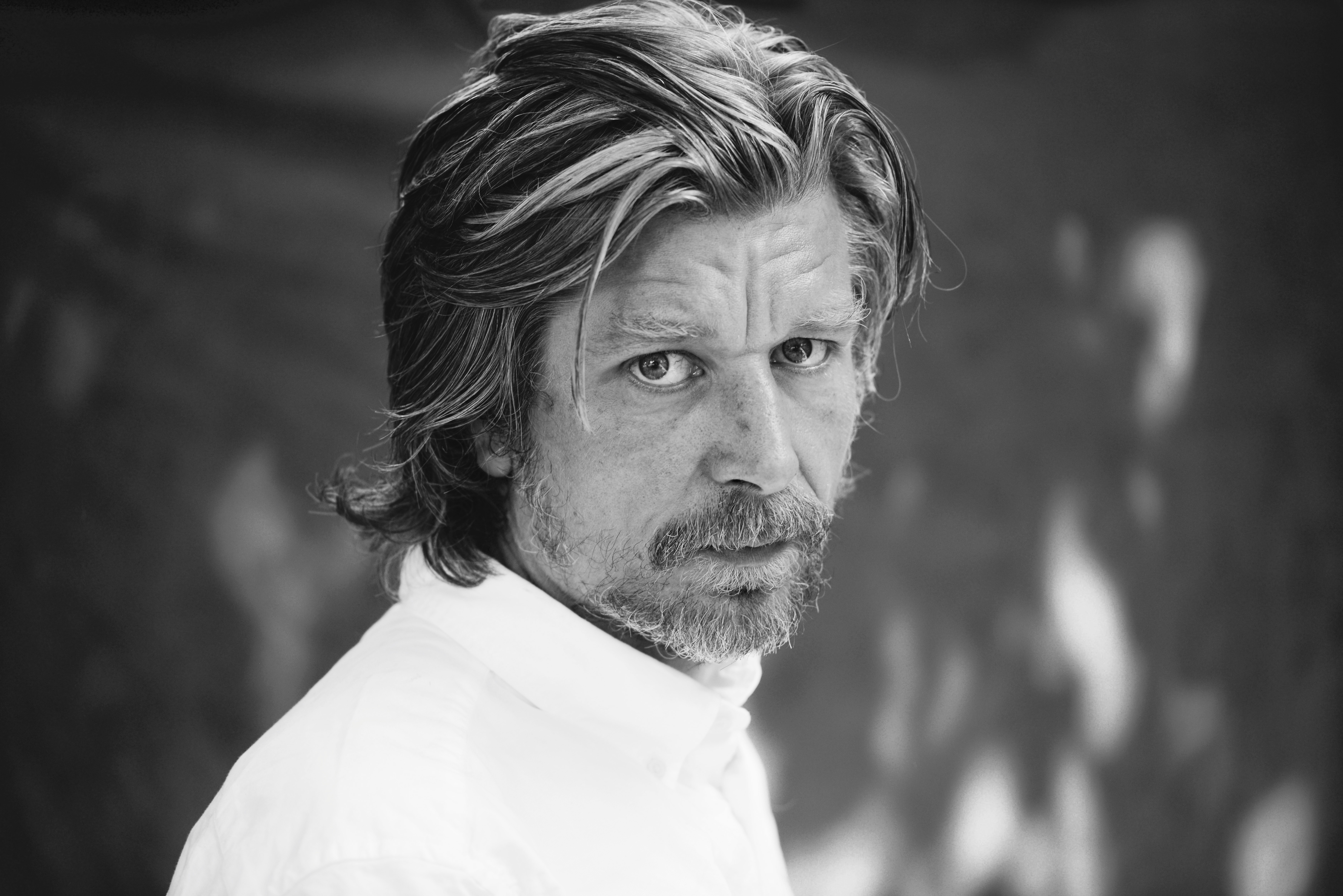
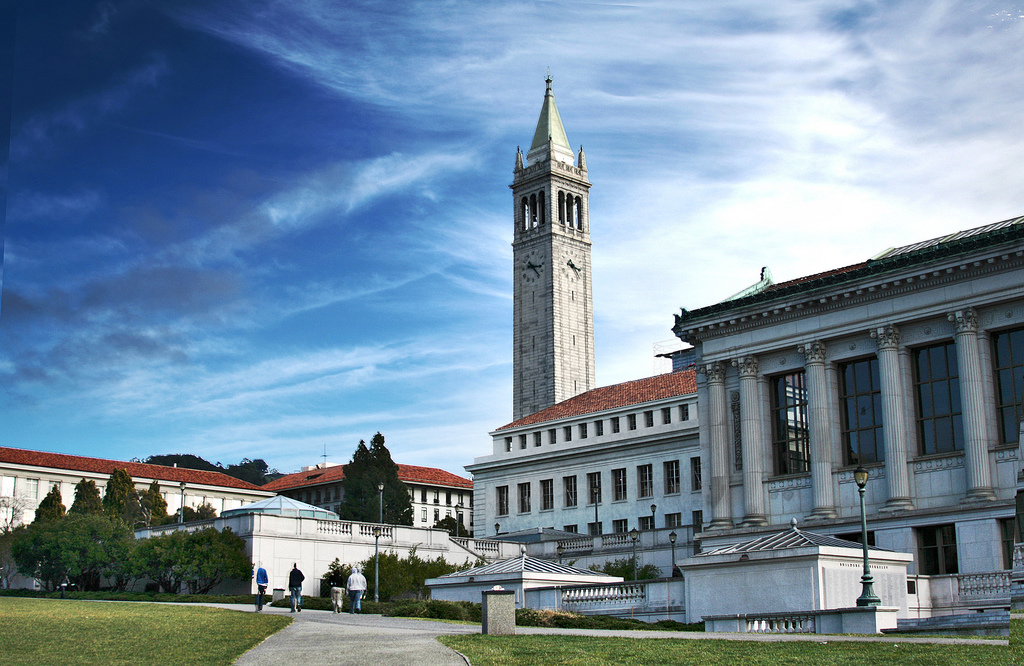


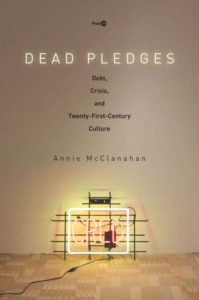 The Financial Turn
The Financial Turn